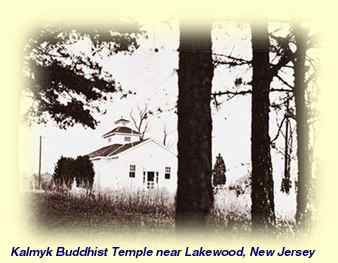There is a fair amount
of active lay participation in the ritual. Two boys hold the poles supporting
the tiered umbrellas. A children's choir, an innovation instituted
long ago in Belgrade,
augments the priestly prayer recital at certain points. When the
priests have finished "pacifying the malicious," as their refrain
goes, three laymen make a libation of milk, one of them holding the bowl
as a second flips the sacrifice from a green plant and a third leads
their prayer recital. Throughout the ceremonials of itrits
and ovti the
older members of the congregation count their rosaries and pass a prayer
wheel among themselves. Others stand or sit by reverently.
 The
sacred part of the day is over when people come to the altar before Mader,
make obeisance, leave a contribution, and go to a priest to be blessed
and receive the blessed water in their hands to drink and rub into
their hair. Then they fall to for a picnic. The
sacred part of the day is over when people come to the altar before Mader,
make obeisance, leave a contribution, and go to a priest to be blessed
and receive the blessed water in their hands to drink and rub into
their hair. Then they fall to for a picnic.
They sit in family groups according to their old territorial memberships in the Don region, but, as the eating and drinking get under way, there is much moving about to pay respects and drink with kinsmen and old friends from other territories. These are people whom they will visit and bring gifts to on other holidays and see on any other convenient occasion; for whom they have or will help defray the expenses of a wedding, donating dowry if they are kin to the bride and money if to the groom; and to whom they will give moral and material aid in case of need. For Kalmyks like to be with one another, they will tell you, and they maintain as wide a circle of relationships as possible. The group is like a network of mutually felt obligations, often generously fulfilled. The traditional entertainment accompanying the Increase and Cairn festivals has changed in form but persists in essence. On the steppes long ago, young Kalmyk men would have displayed their prowess at such sports as horse racing, archery, and wrestling. Today someone may organize a foot-race and wrestling matches for young boys. Older people may break out in a spate of traditional dancing. Eventually these activities give out, and people return to simply drinking and talking together for the rest of the afternoon. Human relationships are important. |